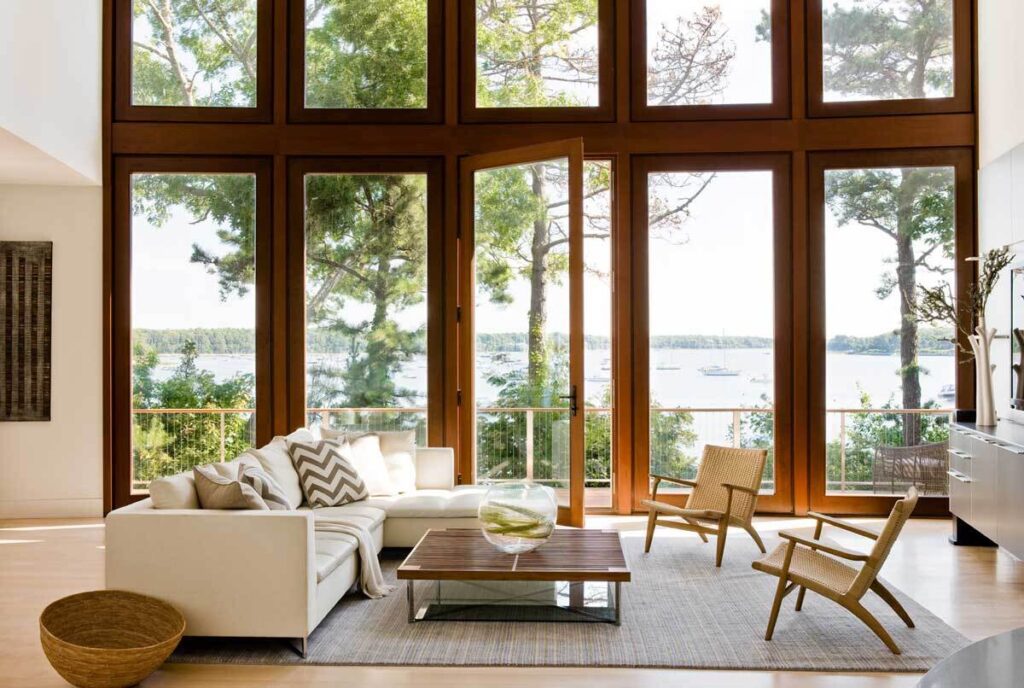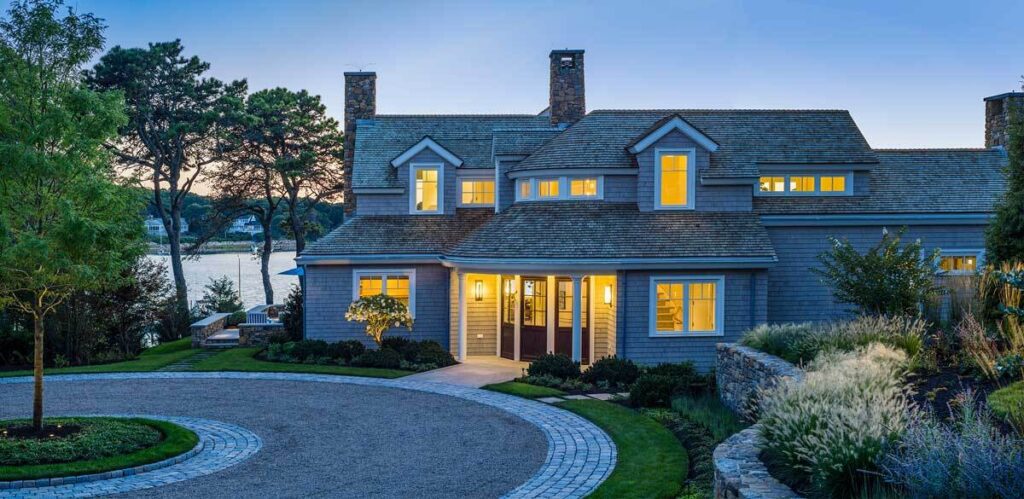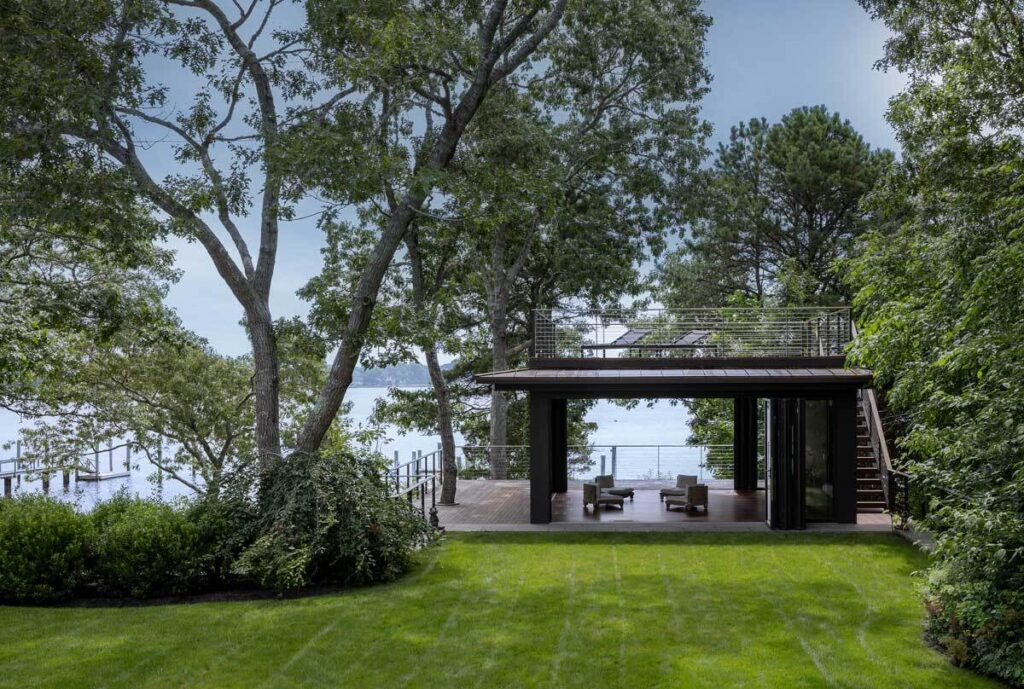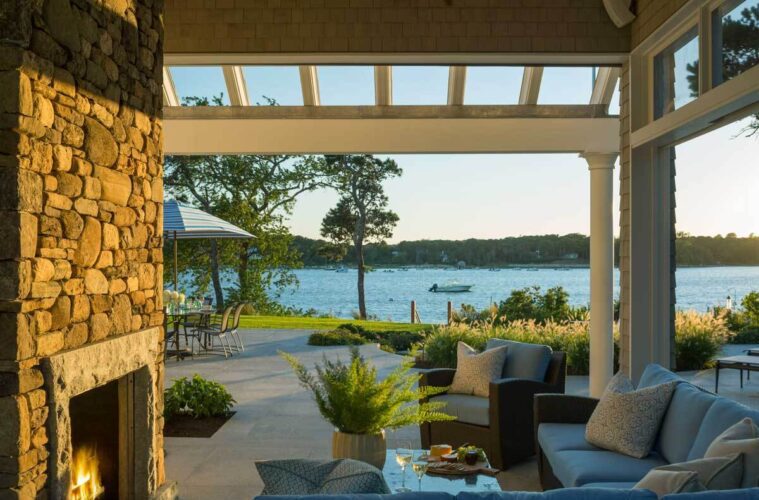Doreve Nicholaeff has made an art designing oceanfront homes that balance light, landscape, and views for beautiful, relaxed living.
SPONSORED CONTENT WITH NICHOLAEFF ARCHITECTURE + DESIGN
Situated on or near the water, coastal homes are bound to have views that pack a punch. But a lot more goes into designing a house on the ocean than adding a lot of windows. Just ask Doreve Nicholaeff, principal of Nicholaeff Architecture + Design, a native of South Africa who has designed scores of houses over the years, many of them on Cape Cod where she and her team have been based since 1986.
“Each town on Cape Cod has a different personality,” says Nicholaeff from her office in the mid-Cape town of Osterville. “Someone building in Wellfleet, for example, may have a different aesthetic sensibility than someone building a home in Sandwich.”
The farther you go down Cape, toward Provincetown, the landscape is different from the manicured lawns and shrubs of Osterville and Cotuit, she observes, and the type of a house she is asked to design reflects that. “Some clients are really open to contemporary and modern while others are more traditional,” says Nicholaeff. “The fun part is getting to know the client and the site, because that’s what informs the project.”
The architect approaches the design of an ocean home, wherever it is and whatever the style, with three things in mind: capturing the views, catching and filtering the light, and connecting the spaces. She also envisions how the house will look from the water.


Capturing the views
The so-called “new” concept of bringing the outside in has been seminal to Nicholaeff’s projects since the beginning. “If it were my house and it was on the ocean, I would want as much glass as I could possibly get,” says the architect, who shares that, generally speaking, architecture is more modern in South Africa than in New England.
Glassy houses allow the views of the landscape and seascape to go beyond being just snapshots to the point where the boundary between inside and outside practically disappears. With less wall space to hang art, nature steps in to draw the eye.


Catching and filtering the light
“I’ve always been a lover of very bright spaces,” says Nicholaeff. “With a contemporary home, we can play with many different ways of bringing light in; when a house is more traditional, we design clerestories and dormers.”
But catching the light is only part of the process. “Filtering it through a house all day long so that it feels like a happy home is just as important,” says Nicholaeff. “Whether we use rooflights, clerestories, dormers, or tall windows, the light is filtered through the house. It reflects and refracts off surfaces to help create the volume of light in the space.”
The architect says the most challenging sites are north-facing, with the view to the north. “You want the south light to come in and make the house feel light and bright,” says Nicholaeff.
A one-room deep space allows for windows on two or three sides that can bring in a lot of light and interesting shadows. Clerestory windows capture sun and light from above.


Connecting the spaces
“The journey of walking from one space to another is important,” says Nicholaeff. “We approach architecture as more than adding one form to another; it is, for us, a sculptural process, revealing the nature of how all the pieces work together to create a final presentation that seems predestined and appears organic.” It’s a “path” along which, on every level, there are connections to other spaces and to the landscape.
A look back
A key step in Nicholaeff’s design process for a house on the water is to actually go out on the water in a boat and view the house from that perspective. “Being aware of how the house looks against its neighbors — how it fits in — is critical,” she says. “How can it work in this context and still keep its own identity?”
Ideally, the house will be in a private setting and protected by trees, such as the recent Modern Treehouse and Pool House project of Nicholaeff’s in the Cape Cod town of Cotuit. Nestled into its setting, the pool house is barely visible from the water. Knowing that it would be hidden from the more traditional houses nearby allowed the architect to skew modern with the design. These new structures are one with the landscape.
Learn more at nicholaeff.com


